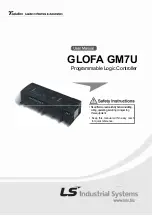
2.3.2
Free-Run Mode Operation
2.4
Reset Considerations
2.4.1
Software Reset Considerations
2.4.2
Hardware Reset Considerations
2.5
Interrupt Support
2.5.1
Interrupt Events and Requests
2.5.2
Interrupt Multiplexing
Peripheral Architecture
www.ti.com
In free-run mode operation, the ADC interface performs A/D conversion continuously without stopping.
For free-run mode operation, the ADC interface should first be configured for scan mode(SCNMD), and
comparator mode (CMPMD) in ADC interface control register (ADCTL), along with other configuration
options. The ADC interface sets the BUSY bit in ADCTL once it is started by writing a 1 to the START bit
in the ADCTL register.
Once started, the ADC interface genertaes the output after A/D conversion time. A/D conversion time is
obtained by Analog switch setup time + ADC setup time + A/D conversion time.
•
Analog switch setup time = Peripheral CLK period * (SET_DIV[5:0] + 3)*2
•
ADC setup time = Peripheral CLK period * (SET_DIV[15:0] + 1)*2
•
A/D conversion time = Peripheral CLK period* (SET_DIV[5:0] + 1)*24
When the A/D scan conversion is finished for all channels, the peripheral sends an interrupt to the system
(if the interrupt is enabled in ADCTL register). Note that unlike normal one-shot mode operation, another
write to the START bit is not required for the one-shot mode operation to start.Once A/D conversion of all
the channels is finished A/D conversion re-start from CH0.
The ADC interface is stopped during the free-run mode operation by writing '0' into START bit. After
START bit turns to '0', it will be stop at the completion of current sample conversion. If user change
configuration, then user need to wait at least a time which defined by SETDIV register after writing '0' into
START bit. The ADC interface can also stopped during the free-run mode operatioor by reconfiguring it to
one-shot mode using the SCNMD bit in ADCTL register.
A software reset (such as a reset generated by the emulator) causes the ADC interface registers to return
to their default state after reset.
A hardware reset of the processor causes the ADC interface registers to return to their default values after
reset.
The ADC interface generates a single pulse interrupt. This interrupt is tied directly to the AINTC. ADC
interface generates Scan Interrupt to CPU when A/D scan conversion is finished for all channels once.
The cause of comparator interrupt is selected according to the CMPMD bit in ADCTL register. A single
common comparative data window has provided for every individual channel. Depending on the
Comparator mode selected an interrupt occurs after the A/D conversion in each channel for either of the
following condition.
•
Conversion data is out of the range of the comparative data window
•
Conversion data is within the range of the comparative data window
The ADC interface is supported by the ARM Interrupt Controller (AINTC) module. The ARM_INTMUX
register in the system control module must be used to select the interrupt source for multiplexed interrupts.
In particular, the ADC interface interrupt is multiplexed with other interrupts. Refer to the
TMS320DM365
Digital Media System-on-Chip (DMSoC) ARM Subsystem Reference Guide
(
SPRUFG5
) for more
information on the System Control Module and ARM Interrupt Controller.
10
Analog to Digital Converter (ADC) Interface
SPRUFI7 – March 2009
Submit Documentation Feedback




































